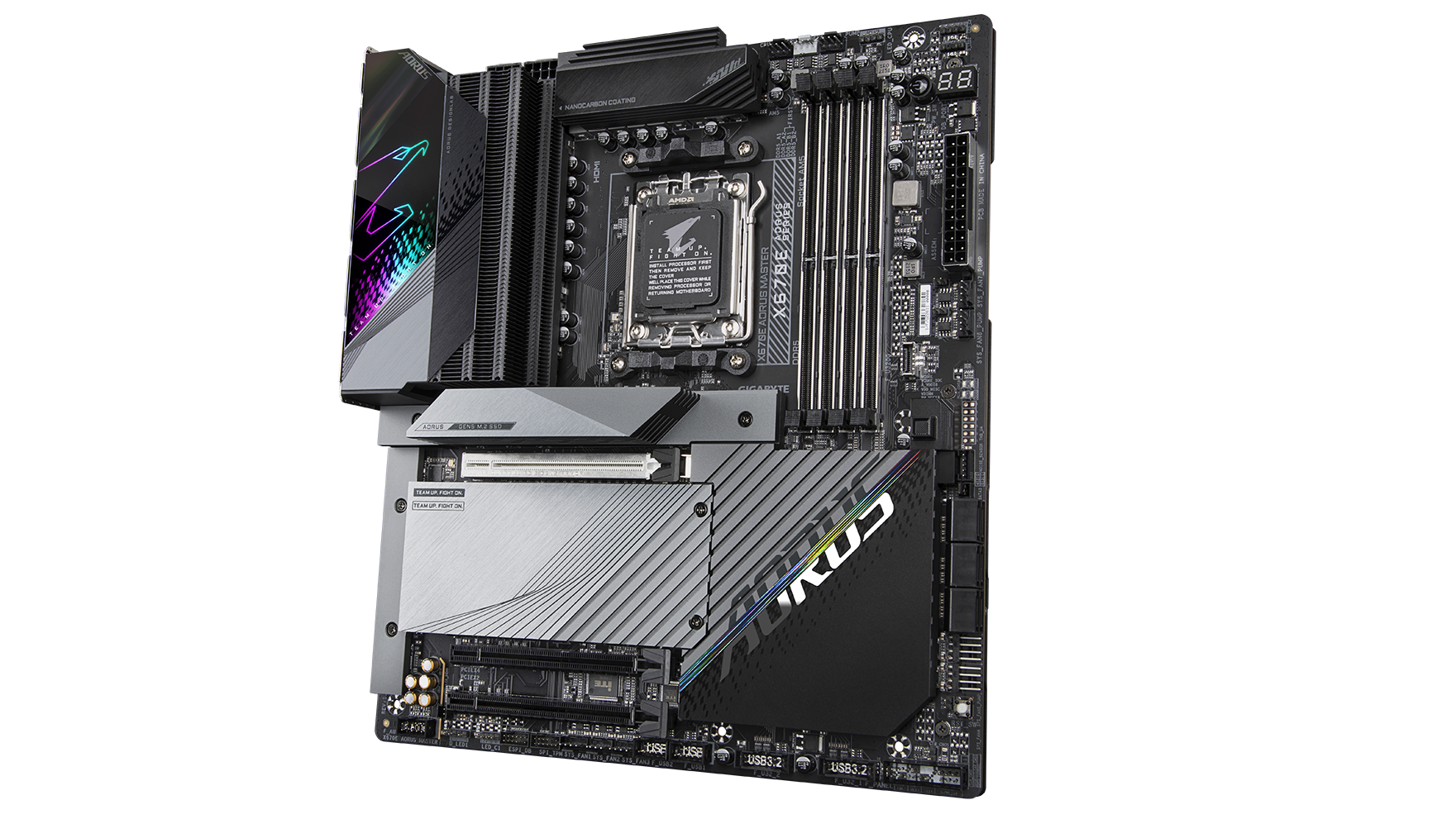The launch of AMD’s Ryzen 7000 series is just a few weeks away. Now it looks like the motherboards (opens in new tab) are in the last stages of BIOS work, as the first samples are being sent out to overclockers for testing and feedback.
@SkatterBencher (opens in new tab), a well-known overclocker, received a nice surprise one sunny day. He unexpectedly took delivery of a Gigabyte X670E Aorus Master (opens in new tab). Note the link there to the actual product page, which is already online. That itself is a little surprising, as we’re still some weeks away from the launch.
Unannounced mail = best mail 📬 pic.twitter.com/pc128qAD3MAugust 9, 2022
The X670E Aorus Master looks like a powerful and feature-rich board. Aorus Master boards are usually known for their premium feature sets, merely lacking the one or two top-end features that you only find on the much more expensive flagship boards.
It’s got a 16-phase 105A digital VRM cooled by Gigabyte’s finned heatsinks (giving them a lot of surface area). It comes with dual PCIe 5.0 M.2 slots, loads of USB ports, Wi-Fi 6E and 2.5G LAN.
As a retired overclocker, I know this kind of seeding is one of the last steps that manufacturers take before a retail release. The idea is that overclockers will poke around in the BIOS and report back any bugs or performance issues they encounter, giving the engineers time to fine tune the BIOS in time for the retail release.
Manufacturers also like to give extreme overclockers time to push for world records. A good bit of PR is always handy! Extreme OC results can be interesting for enthusiasts, even if their real-world relevance is minimal. We can also expect information such as expectations for memory overclocking. How high can the Infinity Fabric run in 1:1 mode? Can a Ryzen 7000 chip hit 6GHz on air or water cooling? With one core or all cores? Overclockers are busy at work seeking answers to these questions, you can be sure.
The Zen 4 release is very close. MSI let the cat out of the bag, publicly posting on Weibo (since removed) that the launch is set for September 15. The AM5 platform is AMD’s first new one in over five years, since before the release of the Ryzen 1000 series in 2017. Users will need a new motherboard and DDR5 memory to be able to run a Ryzen 7000 series CPU.


